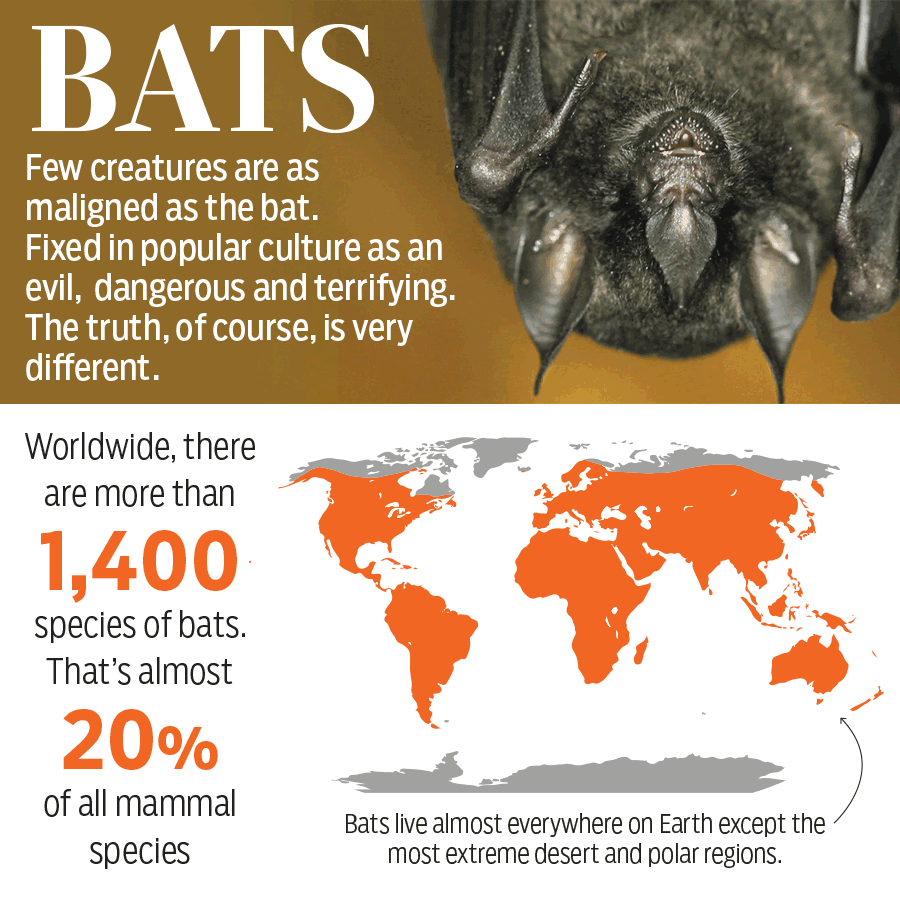
DUBAI: Bats are animals of ill repute. They live in the dark — mostly in remote, hard-to-reach caves (also in building crevices). Bats are blamed for the coronavirus outbreak, the virus that causes the deadly COVID-19, which has infected 37.1 million people. This current pandemic has triggered bat-killing sprees around the world. It's man's token pushback against the hairy mysterious creatures of the night, which are also blamed for past deadly outbreaks.
Scientists have established that the MERS coronavirus jumped from bats living in remote caves in the Arabian peninsula, to camels as intermediaries, before eventually jumping to humans, infecting 2,442 and killing 842 people in 2012-2013. Before that, bats were also seen behind SARS, which killed 774 people in 2003. And then in late 2019, bats struck again, with what's later called SARS-CoV-2, and now blamed for at least 1.07 million deaths (as of October 11, 2020).
Many other epidemics had been traced to bats. And scientists are discovering new, bat-borne viruses all the time. Bats are considered medical mysteries. Some of the planet's scariest, most lethal viruses find a natural refuge inside bats. These include:
- Nipah
- Ebola
- Rabies
- Filoviruses
- Marburg
- Measles
- Hendra
- Mumps
- Coronaviruses (SARS-CoV-1, MERS, SARS-CoV-2)
Some people think of bats, too, as the haunting part of the dark recesses of science. Bats' qualities and skills defy explanation. Their being vectors of an untold number of viral diseases inspire numerous tales of horror. Their ill repute fosters rumours of evil and darkness, and villainous pursuits.
These creatures spend half of their lives in deep, dark caves, suspended as they sleep. Should humans then simply exterminate bats from the face of the earth? Shouldn't we just "smoke them out", even nuke them? Or are bats simply misunderstood? In this article, we’re going to lift the curtain of darkness on some of the most amazing animals on the planet:

'Missing link': How did bats evolve?
Bats have been around for at least 50 million years (based on oldest fossilised bats discovered). In contrast, the oldest fossils of Homo sapiens (you and me) were dated 300,000 years ago, when human beings are believed to have evolved in Africa. So bats had been on earth longer than humans, as we know ourselves, have roamed the Earth.
Bats do baffle scientists. For years, they were unable to explain how bats (which are close to rodent family) evolved their ability to fly. Then paleontologists found the "missing link" between bats and their non-flying ancestors. A pair of bat fossils found in 2008 — which date from around 52.5m years ago — suggested to scientists that flight evolved before echolocation, their unique ability to find their way in the dark.
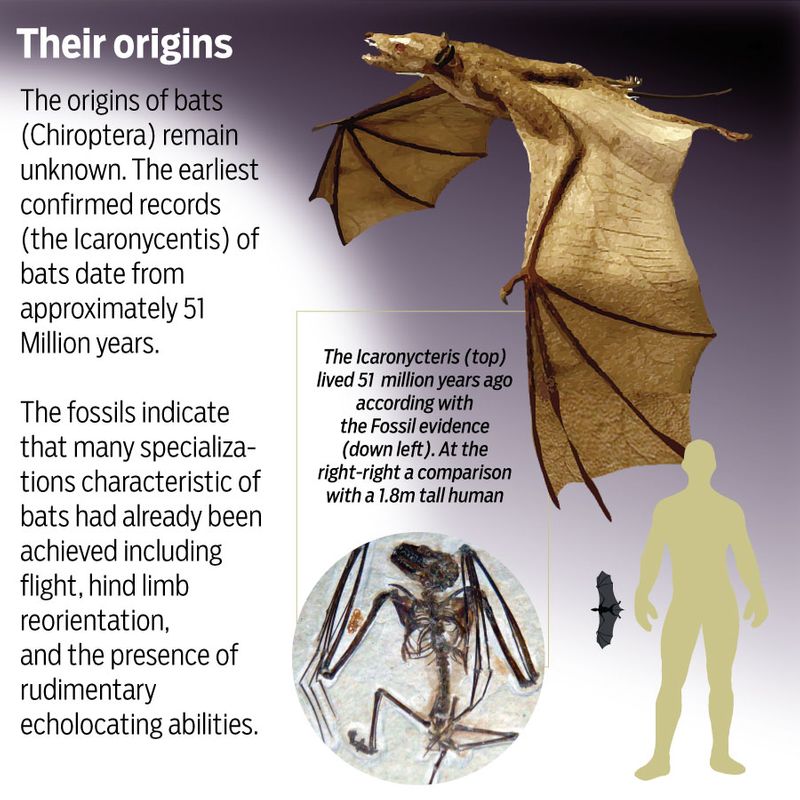
If bats came from rodents, are they mammals?
Yes, they are. Bats are the only mammals that figured out how to fly without using an airplane, a helicopter or a hot air balloon. Bats are believed to have evolved from mice: what were once their limbs eventually became wings, allowing them to hunt around the forest, evolutionary biologists. It’s tough to find food in the dark.
How do they find their way in the dark, and hunt for food?
To operate in the dark, bats have had to develop some very sophisticated wayfinding equipment. It's called "echolocation". This innate tool include very high-frequency sound. You and I cannot hear them.The sounds bounce of objects echoes them back to the bats.
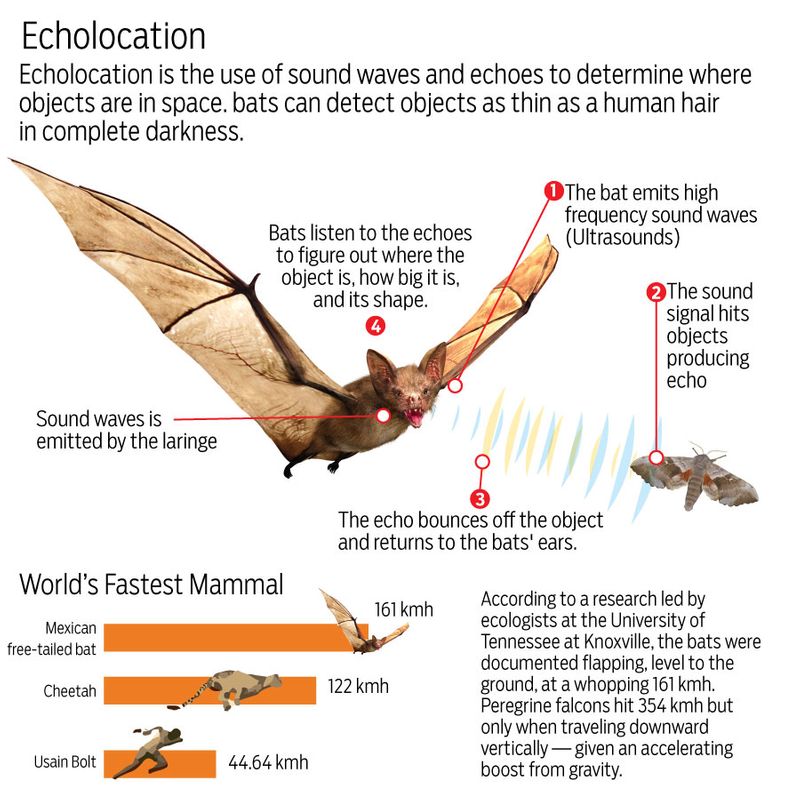
How many bat species are there in the world?
There are over 1,400 species of bats worldwide. Bats can be found on nearly every part of the planet — except in extreme deserts and polar regions. In the UAE, 9 bat species are known. There are 50-plus species in the Arabian Peninsula (the range is 50 to 55 species).
1,400
number of known bat species. Bats can be found on nearly every part of the planet — except in extreme deserts and polar regions.The UAE number could definitely go over a dozen, if further studies are done on bats, according to Dr. Reza Khan, Principal Wildlife Speciast at Dubai Safari. The US and Canada are home to about 45 species of bats and additional species are found in the US territories in the Pacific and Caribbean.
How many bats are there in the world?
There are literally billions of bats in the world. Bats make up 20% of the world's mammalian population, making them the second-most populous species of mammals, after rodents. There could be more species of bats. Most of the bat population is found in the tropics, of which about one-third are found in South and Central America. The island country of Indonesia is a home for about 175 species of bats.
Bats are the only mammals that are able to maintain a sustained flight. Most of the bat population, about 70%, feeds on insects. The rest of the bat population mainly feeds on fruits. Few of the bat population feed on animals. There exist also the vampire bats that feed on blood. Most of the bat species of Earth are nocturnal. Many bats in the world reside in caves and crevices on building and trees.
How far can bats fly?
Certain bats, like the Mexican free-tailed bat, appear to fly almost all night long hunting insects. Also, they could be flying as far as 50 to 80km (30-50) miles each night.

What do they feed on?
Most bat species, about 70%, feeds on insects. The rest of the bat population mainly feeds on fruits. Few of the bat population feed on animals (blood). There exist also the vampire bats that feed on blood. Most of the bat species of Earth are nocturnal. Many bats in the world reside in caves and crevices on building and trees. Bats are the only mammals that are able to maintain a sustained flight.
'Vampire bats': Where do they live, do they really eat blood?
These are interesting creatures, also known as the "vampire bats". The bats' razor-sharp teeth can slice through skin, using almost supernatural senses to seek out their prey. These are the species that the thirst for blood in the tropics, where rainforests teem with life. It’s mostly found in the Amazon, Brazil Ecuador.
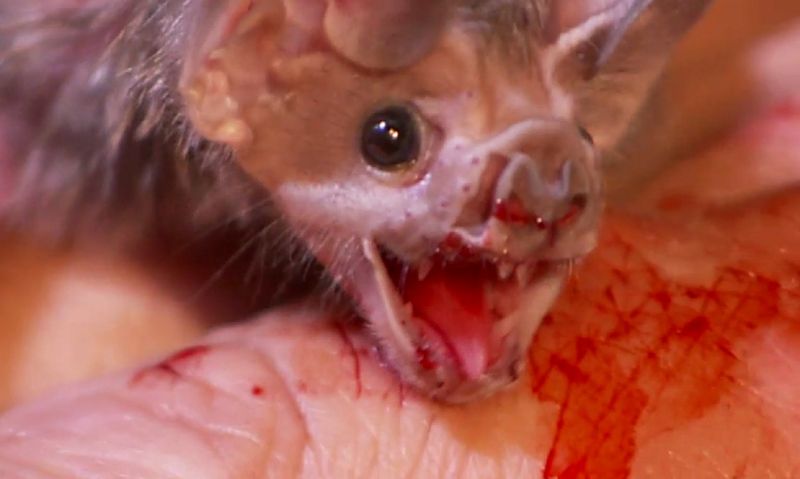
Vampire bats (a species of the subfamily Desmodontinae) are leaf-nosed bats. Their main food source is blood, a dietary trait called "hematophagy". Three bat species feed solely on blood: the common vampire bat, the hairy-legged vampire bat, and the white-winged vampire bat. but vampire bats have an even more interesting distinction—they are the only mammals that feed entirely on blood.
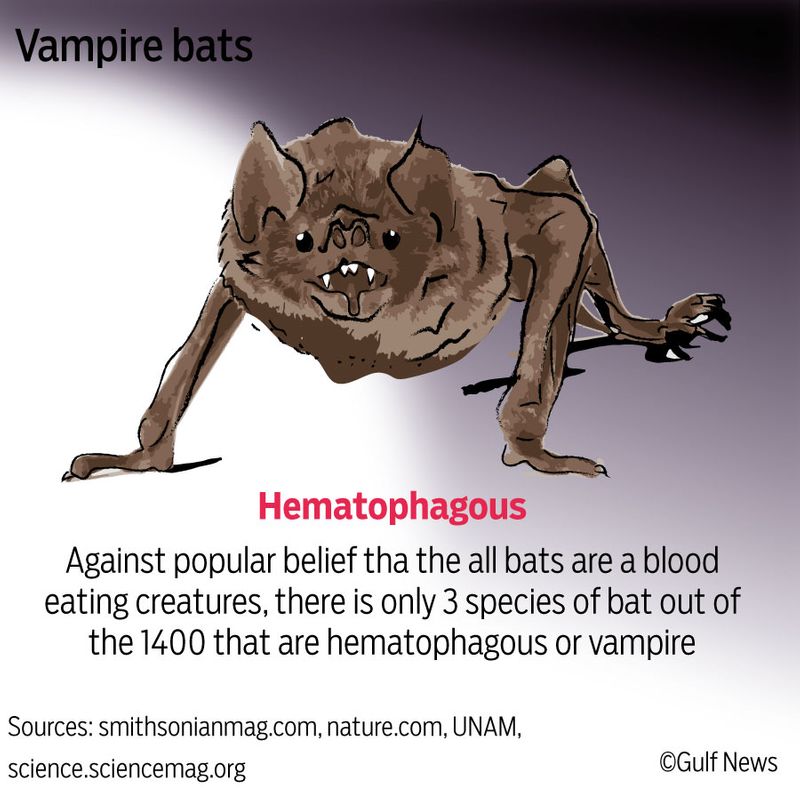
Its saliva has a natural anticoagulant. With their blood-lapping tongue, the vampire bat's attack is so subtle that it can sometimes feast undetected.
The vampite bats typically gather in colonies of about 100 animals, but sometimes live in groups of 1,000 or more. In one year, a 100-bat colony can drink the blood of 25 cows. During the darkest part of the night, common vampire bats emerge to hunt. Sleeping cattle and horses are their usual victims, but they have been known to feed on people as well. The bats drink their victim's blood for about 30 minutes. They don't remove enough blood to harm their host, but their bites can cause nasty infections and disease.

What are the biggest predators of bats?
Bats have few natural predators — they mostly die of disease. Owls, hawks and snakes eat bats. But biggest killer of bats is the "White-Nose Syndrome" (WNS). Researchers call the disease such because of the visible white fungal growth on infected bats' muzzles and wings. This cold-loving fungus infects bats during hibernation, when the bats reduce their metabolic rate and lower their body temperature to save energy over winter. In the US alone, it is estimated that more than 6.5 million bats have died so far from WNS. Scientists are working to understand the disease. How to help the bats? Avoid places where bats are hibernating. And if you do go, decontaminate your clothing, footwear and gear
3,000
number of insects one bat could consume in a single night. A colony of 100 little brown bats can consume up to a quarter million mosquitoes and other small insects each night.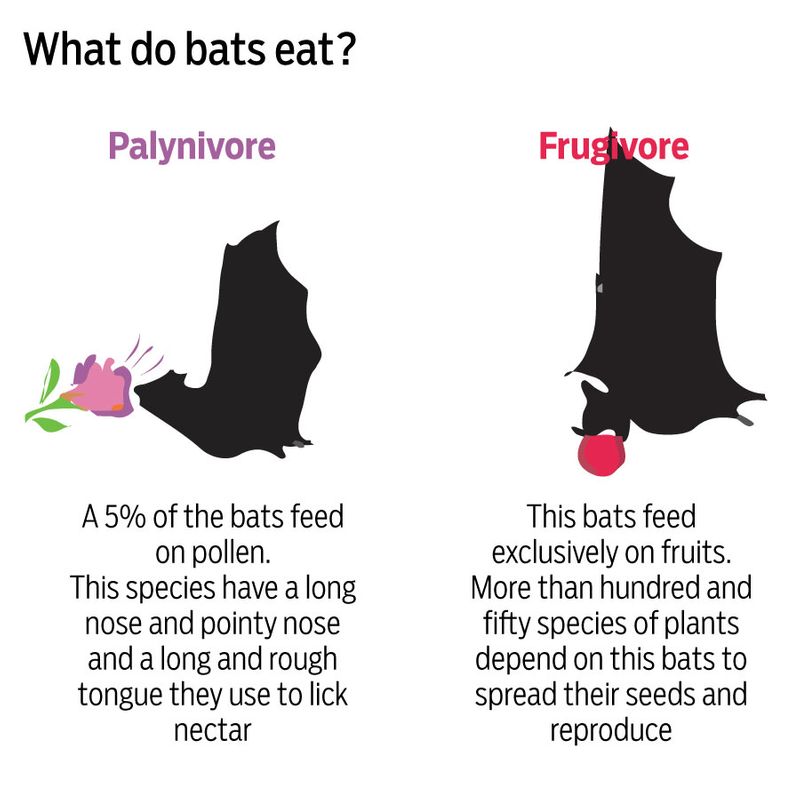
Megabats, microbats: What is the biggest and smallest bat?
The golden-crowned flying fox (Acerodon jubatus) is a fruit-eating megabat found only in the Philippines. It is one of the planet's largest bat species, with a wingspan up to 5 feet 6 inches long and a weight of up to 2.6 pounds.
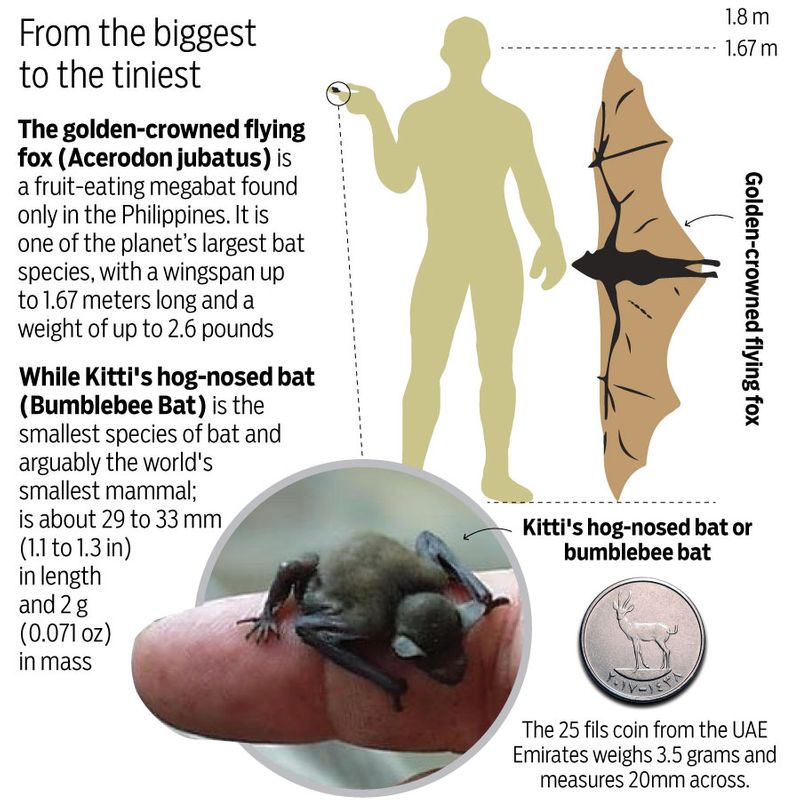
Kitti's hog-nosed bat (Craseonycteris thonglongyai) is currently known the world's smallest mammal and most definitely the world's smallest bat. Informally known as the "bumblebee bat", Kitti's hog-nosed bat is about the size of a large bumblebee, weighing in at just two grams.
Is it a good idea to touch bats when you see them?
No. Dr Reza Khan, wildlife specialist at Dubai Safari, advise people never to touch bats, unless they need to, i.e. for purposes of study. "If someone gets in contact with a bat, they should never touch a bat, like they must never touch a snake when they see one. Most of the members of the public, we don't have any business with wild animals. We enjoy their beauty. We love them, We take pictures of them. We should not touch them."
Are we going to have more bat-borne diseases due to humans encroaching into their habitat?
Some scientists and wildlife experts argue that the rapid spread of human settlements in once-remote regions have put people in ever-closer proximity to virus-carrying animals, including bats. More people meeting more animals, carrying more diseases — makes for a perfect viral melting pot.
As the human population rises, says Daszak, "the number of those spillover events is rising exponentially. It is a direct product of human activity," Daszak said. And it's "a simple mathematical certainty" that there will be more outbreaks like the new coronavirus in the future.
How many viruses do bats carry?
Bats carry viruses, including the one causing COVID-19, with few ill effects. How do they survive being carriers of multiple viruses? Are they nature's way of pushing back on humans encroaching too much into their domain, or over-reach? Scientists are only beginning to understand. The first target is to study the bats' immune systems. A 2016 study published in the Annual Review of Virology journal state that bats host a range of viruses — including ebolaviruses, and many important human viral infections, such as measles and mumps.
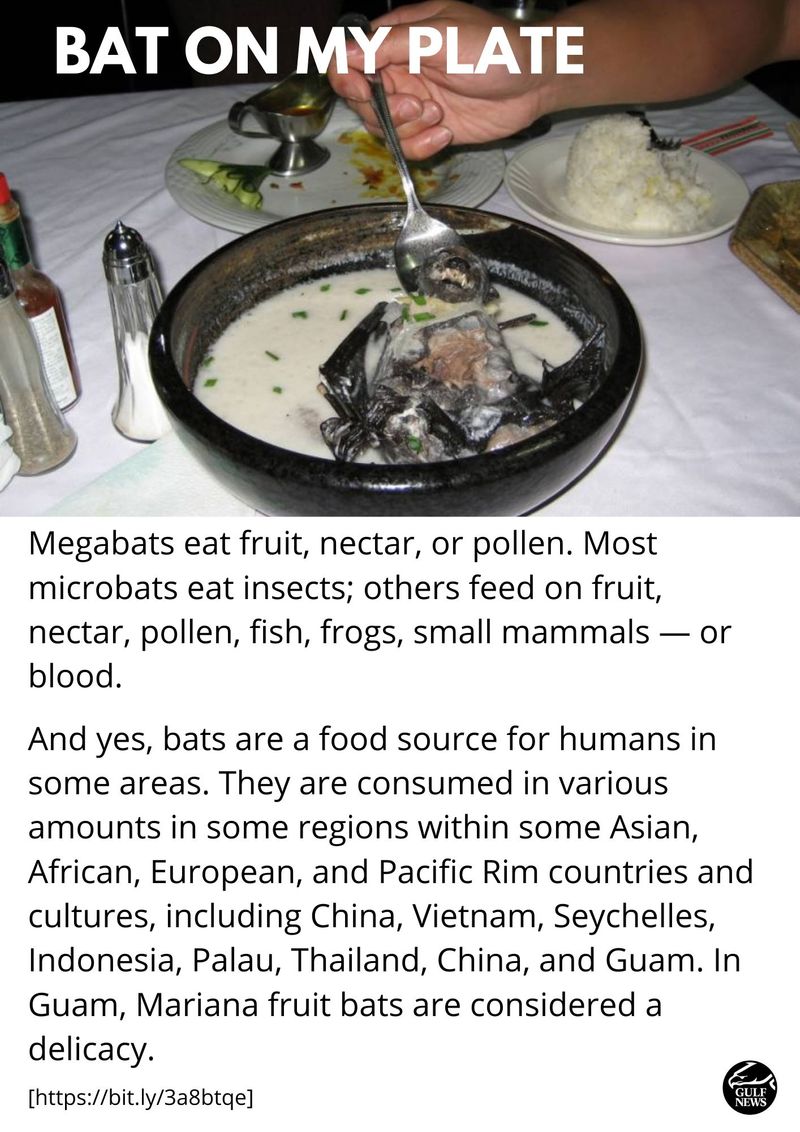
Scienstist have yet to fully map out the number and types of viruses in bats. In 2016, David T S Hayman, Molecular Epidemiology and Public Health Laboratory at the Infectious Disease Research Centre, Hopkirk Research Institute, Massey University, New Zealand, reviewed the all viral families detected in global bat populations. What he found: a vast viral diversity in bats — viruses with all known types of genomic structures and replication strategies have been discovered in them.
Dr Hayman, however, cited that the bat viral databases have major gaps, with some regions, such as South America, being "undersampled". Some bat families, such as Emballonuridae and Miniopteridae which are widely distributed worldwide, are underrepresented on bat viral databases. Hayman recommends further studies, including those that address these sampling gaps, in order to push science further, and develop virologists' understanding of viral-host relationships.
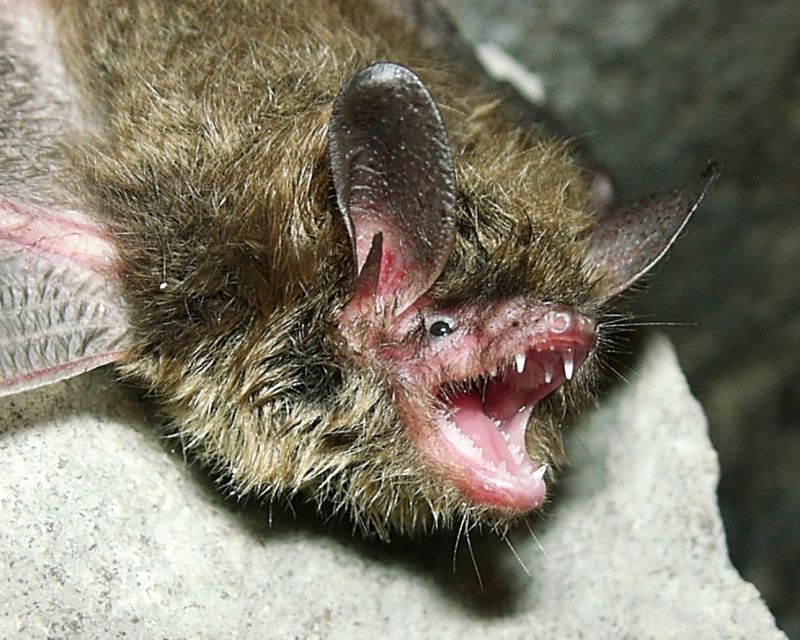
What are the benefits of having bats around?
Most ecologists and wildlife specialists, including Dr Reza Khan of the Dubai Safari, would argue that bats make good neighbours. As the only major predators of night-flying insects, bats play an important role in insect pests control. One bat can consume as many as 500 insects in just one hour, or nearly 3,000 insects every night. It is estimated that a colony of just 100 bats may consume more 250,000 mosquitoes and other small insects each night.
Bats that live in agricultural areas, feed on bugs, cucumber beetles, green and brown stink bugs, and leafhoppers. Research has shown that a colony of 150 big brown bats can eat 38,000 cucumber beetles, 16,000 June bugs, 19,000 stink bugs, and 50,000 leafhoppers. They can prevent the hatching of 18 million corn rootworms by feeding on the adult beetles. Some bat species maintain forest health by feeding on forest pests.
Other economic benefits, besides biological pest control, include plant pollination, seed dispersal, guano mining, bush meat and medicine, aesthetic and bat watching tourism, and education and research. Plants need pollination so they can reproduce. It means more food and fruits for you and me.








